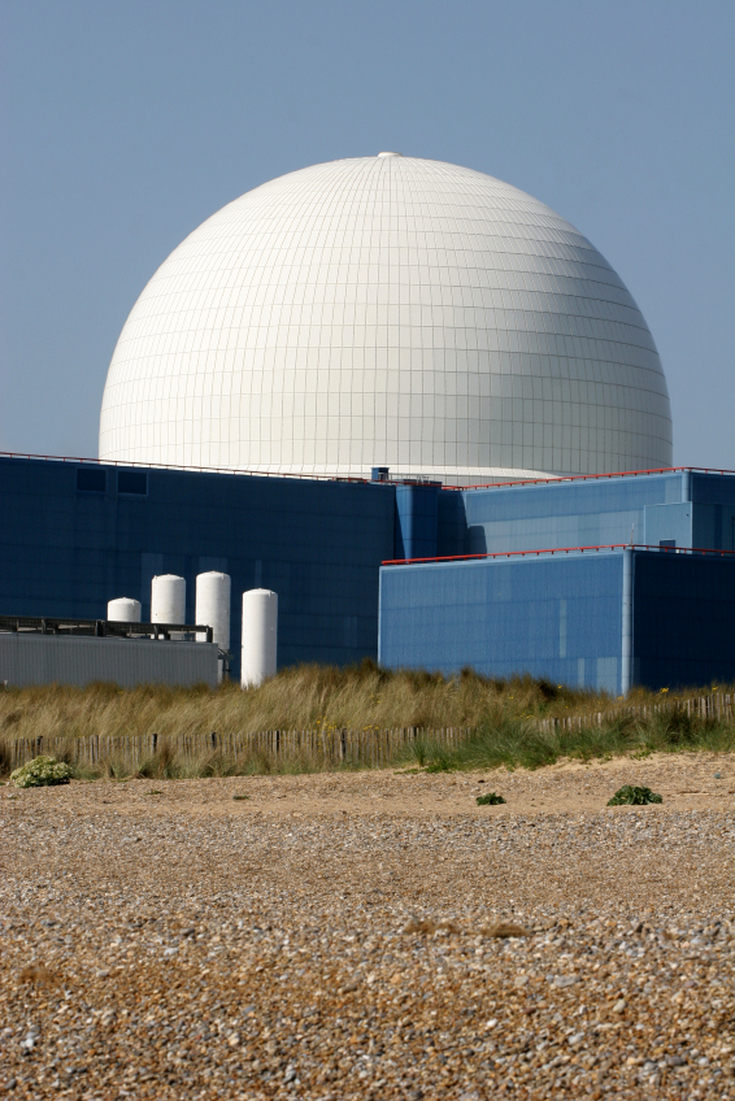The costs of new nuclear power stations look set to be loaded more directly on to consumers, under new, Treasury-approved rules announced by D-BEIS.
A Nuclear Energy Financing bill to be set before Parliament will contain costing measures based on the Regulated Asset Basis (RAB) model, already used in Whitehall to allocate construction costs of critical public infrastructure such as HS2 and major river crossings.
Billed by ministers as a “win-win” solution set to spur more private investment, funding measures announced by D-BEIS yesterday confirm big nuclear stations as a key component in the government’s decarbonisation of energy.
The £120 million earmarked in last week’s Net Zero Strategy on small modular reactors under 500 MW had seemed to indicate a shift in the government’s nuclear priorities. But its advocates say RAB is a tool applicable equally to capital budgeting on energy projects big and small.
Of the UK’s seven nuclear stations now generating, Hunterston B, Hinkley Point B, Heysham I and Hartlepool are all scheduled to retire before April 2024, at a combined loss of 4 GW in capacity. Hunterston and Hinkley Point B will begin stepping down output from next summer.
Previous funding regimes for big nukes had compelled developer EDF to enter Contracts for Difference, which yield revenues only when a station begins generating. A high strike price, such as Hinkley Point C’s notorious £ 92 per MWh guaranteed and index-linked for 30 years, was the result, critics argued.
In addition, construction overshoots to complete big, customised plants such as Hinkley C beyond the nine years typically quoted currently mean only state-owned developers with the strongest balance sheets can tender.
Diminishing reliance on overseas developers such as China’s CGN, EDF’s controversial partner at Hinkley, is thus presented as a further benefit of the RAB.
Energy secretary Kwasi Kwarteng conceded that RAB would mean energy buyers paying more upfront for new big projects. But other net zero policies – such as in energy efficiency – would leave the average household’s bill in 2024 lower than if no action had been taken, he claimed.
Placing the deal in the context of the world’s surging gas prices, Kwarteng said, “We need to ensure Britain’s electricity grid of the future is bolstered by reliable and affordable nuclear power that’s generated in this country”.
For the Nuclear Industry Association, chief executive Tom Greatorex welcomed the announcement. “This bill is exactly what we need to cut financing costs and get on with building stations. Consumers will save money, businesses will get more predictable electricity costs, and the UK will save carbon”, said Greatorex.
The NIA claimed a large-scale nuclear project financed using RAB would add “a small levy to bills of no more than a few pounds during the early phase of construction” and less than £1 per month over the course of a project.
Over the lifetime of each station, RAB financing would save consumers around £30 billion on bills, and cut £10 per year off the typical bill.
Income generated would allow project developers to finance the project at cheaper rates, which would substantially cut the ultimate cost to consumers, said the lobbyists.
Nuclear provides around 16% of Britain’s electricity. Of the nation’s stations now in operation, only Sizewell B’s 1.2 GW Pressurised Water Reactor is scheduled to be generating after 2030.





Interesting that you label the strike price for Hinckley Point C as “notorious” at £92/MWh. What label would you use for Hornsea One, still the largest operational off shore wind farm? Their strike price is £158.75/MWh, guaranteed for the next 15 years, and adjusted for inflation…
Just hope you are even handed in your appraisal. After all, wind farms are costing us in subsidies £10 billion a year, and no sign of that disappearing soon!
Thanks once again for your contribution, Dr P, and I stand informed. Yet nuclear Hinkley C’s inflation-linked strike price is guaranteed by taxpayers for 30 years, not the 15 you cite for Hornsea One wind. I – and Energyst readers – would love to see your source for that “£10 billion a year for wind” allegation. And wasn’t nuclear promoted – by the Rand Corporation, I recall – to the US Congress in the early 1950s as ‘energy too cheap to meter’? Some humility? What do other readers think?